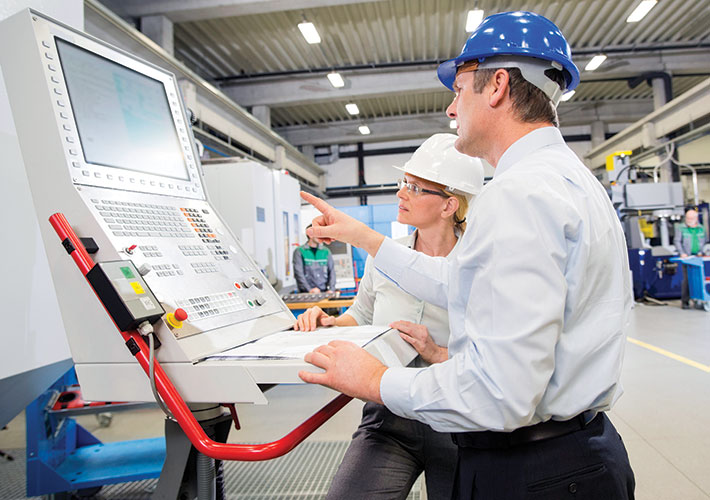
A Smaller Footprint
Sustainable Processes for Manufacturing
Manufacturers working to adopt sustainable practices will find support from a new ASTM International guide. This standard (E2986, Guide for Evaluation of Environmental Aspects of Sustainability of Manufacturing Processes) will serve as a key reference tool in helping business and industries find consistent ways to collect data and evaluate metrics regarding sustainability, ultimately helping them reduce their environmental footprint.
Amy Costello, sustainability manager at Armstrong World Industries says, "As more and more businesses develop sustainability strategies, this guide will help industries uncover the right metrics and consistent procedures for evaluating their progress." Costello chairs the ASTM subcommittee responsible for E2986, E60.13 on Sustainable Manufacturing (part of ASTM International Committee E60 on Sustainability).
Costello's thoughts are echoed by ASTM member Paul Witherell, a mechanical engineer and project lead at the U.S. National Institute of Standards and Technology. "The public has become increasingly aware and mindful of sustainability practices," says Witherell. "Increasingly, consumers are making purchasing options based not only on whether a product is sustainable, but also on whether that product's manufacturer uses sustainable practices."
Witherell notes that sustainability and environmental impacts are issues of increasing importance for both industry and consumers, but prior to the approval of E2986, there had been no standard to help incorporate sustainable thinking into manufacturing and process planning from the shop floor to the plant/factory levels.
"This standard aims to fill that gap," says Witherell. "It can be adopted by both large companies and small and medium enterprises as a starting point or guide from which best practices can be learned and incorporated into process decisions."
Witherell emphasizes that E2986 will help SMEs that don't have the same access to tools and in-house expertise as their larger corporation counterparts.
"The primary user of this standard is intended to be the SME looking to implement more sustainable and environmentally friendly practices into their production line," says Witherell. "It will help them establish their own sustainable manufacturing practices and guide them in identifying criteria on which decisions can be made."
In addition, Witherell says that larger manufacturers that have a strong collaboration with their suppliers, who are usually SMEs, will also use E2986 to improve supply network efficiency.
The guide addresses how to:
- Set boundaries for evaluating the sustainability of a process,
- Identify the parameters needed for equipment and machinery, and
- Create and use models that support consistent evaluations and sustainability-driven decision making.
Witherell invites all interested parties to join in E60.13's standards developing activities. "The task group was able to create a solid foundation on which we hope to continue to build," says Witherell. "We view the existing standard as just the beginning and intend to make revisions moving forward."
E60.13 is asking SMEs to examine, evaluate and provide feedback on the methods in the standard. In addition to E2986, the task group is developing a proposed new standard, WK35705, Guide for Sustainability Characterization of Manufacturing Processes. The standard will provide details into the characterization of manufacturing processes and the development of process models.
 SN Home
SN Home Archive
Archive Advertisers
Advertisers Masthead
Masthead RateCard
RateCard Subscribe
Subscribe Email Editor
Email Editor